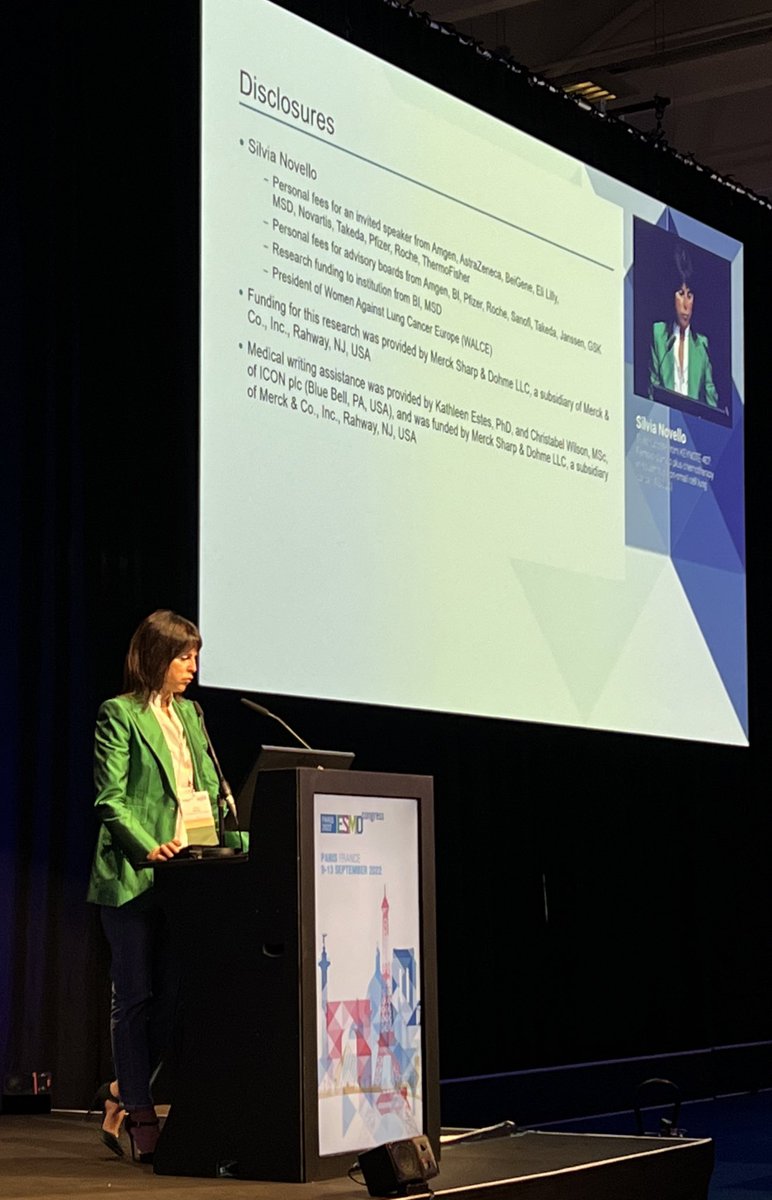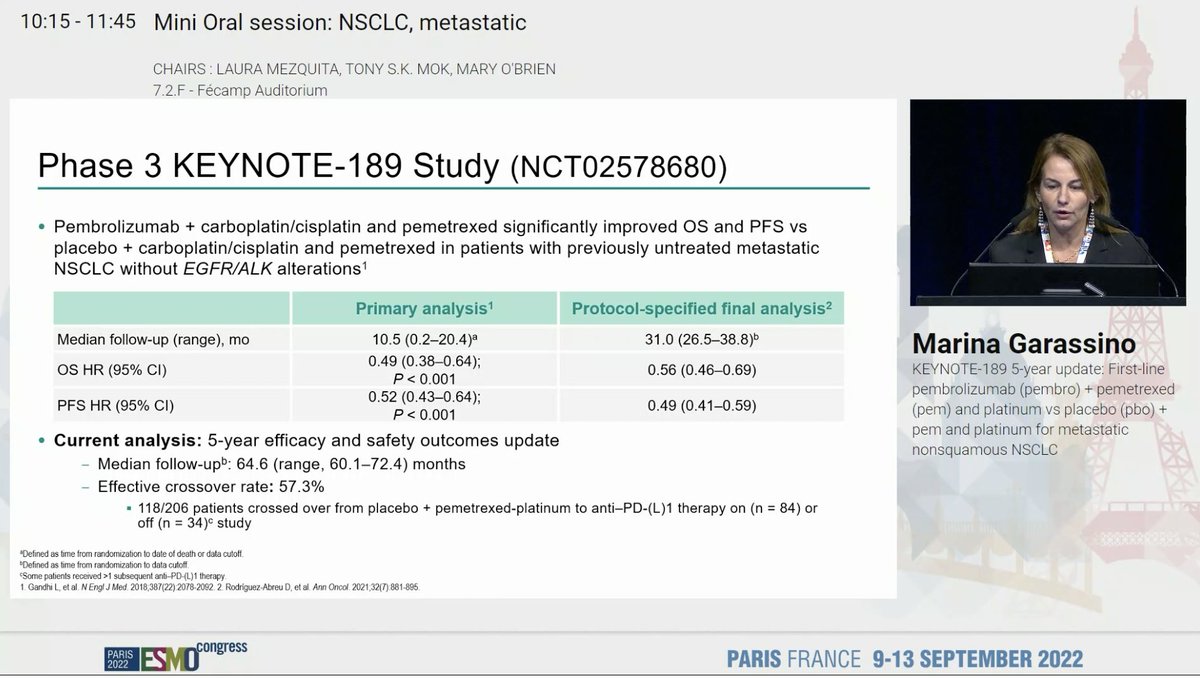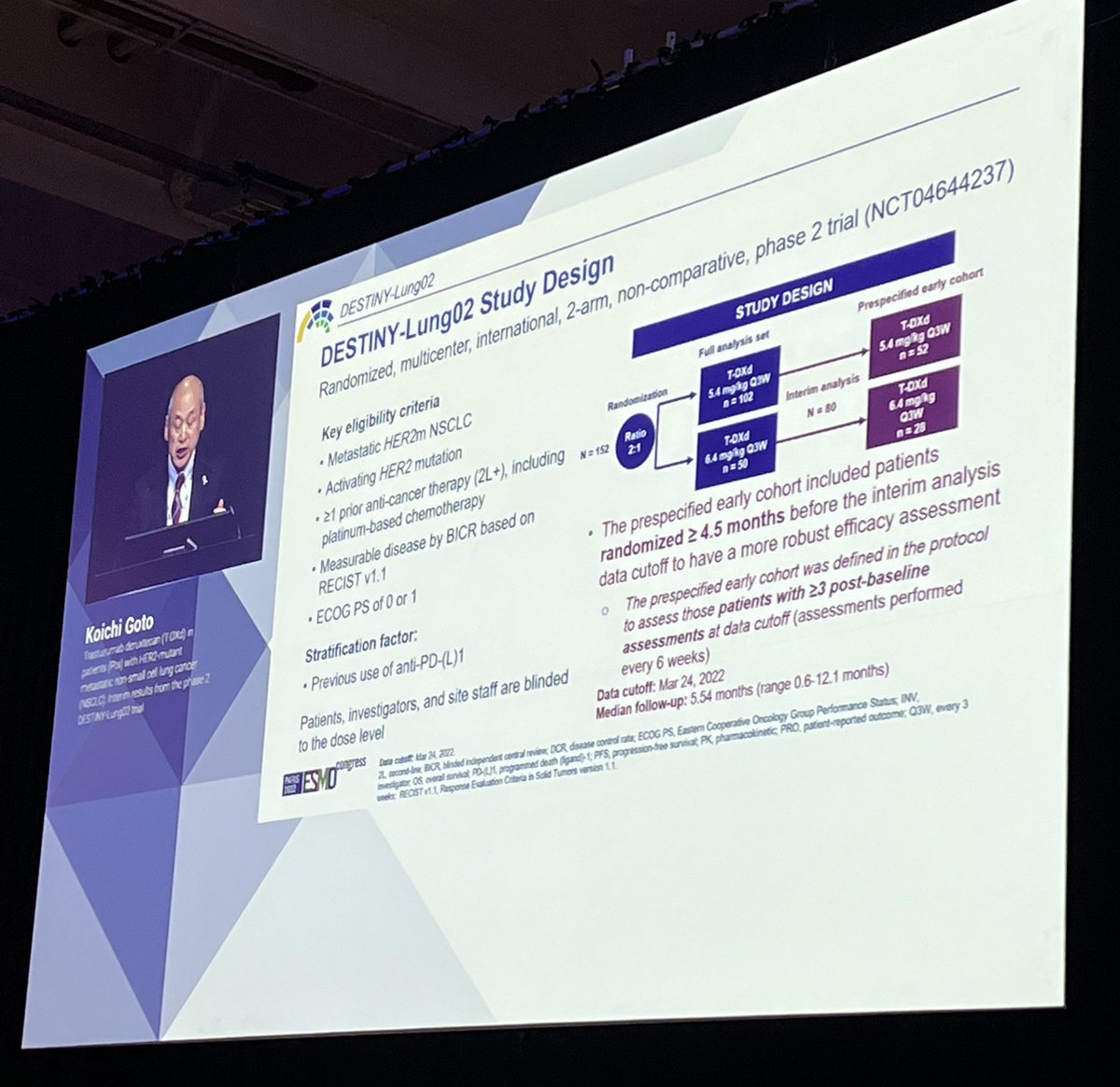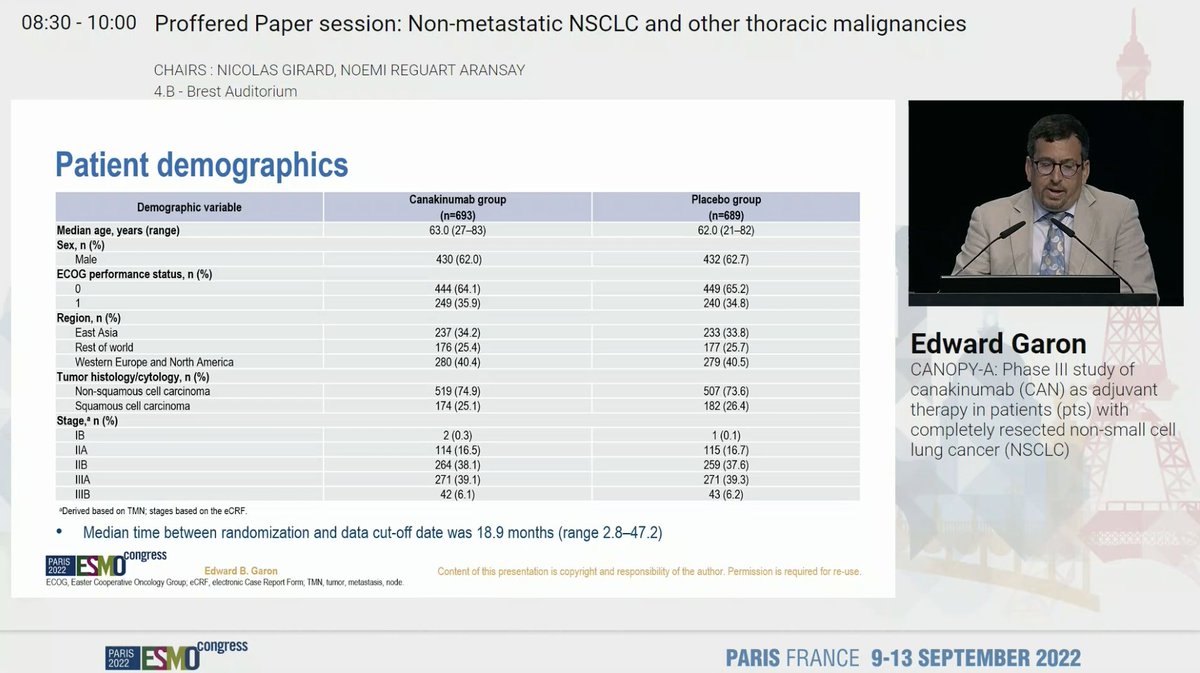
Dr. Silvia Novello presents 5y update on KEYNOTE 407 (platinum plus tax and +/- pembrolizumab for 1L squamous NSCLC #ESMO22 

With longer follow up, OS favors pembrolizumab arm with mOS 17.2 vs 11.6m (OS HR 0.71) in squamous NSCLC. 5y OS rate 18.4% vs 9.7%. PFS benefit (HR 0.62) and higher RR across PDL1 strata. #ESMO22 







For patients who complete 2y of pembrolizumab, 3y OS rate (after completing 2y pembro) was 70% - though not all of those patients are cured (44% were alive without PD or subsequent therapy). #ESMO22 

No new safety signals including in subset with 2y of pembrolizumab therapy. Reaffirms SOC and refreshing to see long term benefit in subset of patients. Efforts now focusing on identifying who those patients are and how we can provide that benefit to more / all patients! #ESMO22 



• • •
Missing some Tweet in this thread? You can try to
force a refresh




































